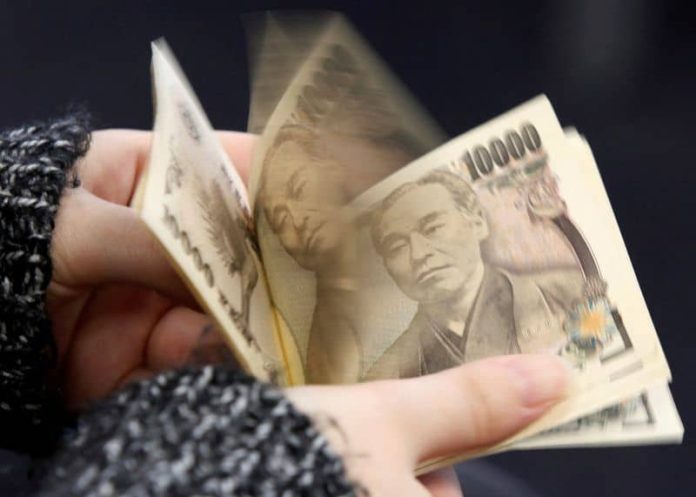By Tom Westbrook
SYDNEY (Reuters) – The dollar and euro made firm starts on Monday to a week full of central bank meetings, while the yen was struggling on investor expectation the Bank of Japan will be the odd one out as policymakers hike rates in Europe and the United States.
The Federal Reserve concludes a meeting on Wednesday, followed by the European Central Bank (ECB) a day later and the Bank of Japan on Friday.
The yen had dived against the U.S. dollar and crosses last week following a Reuters report that the Bank of Japan was leaning towards keeping its yield curve control policy unchanged, though volatility gauges have spiked as the meeting looms.
The yen was nursing losses at 141.45 to the dollar and at 157.28 to the euro, it wasn’t far from last week’s 15-year low at 158.04, nor from last week’s record low on the Swiss franc.
The euro held at $1.1121 on Monday. The U.S. dollar index was steady at 101.04.
“The last week left markets believing in a soft-landing scenario for the U.S. markets where the (Fed) ends its hikes … and then sees a steady drop in CPI without a recession,” said Bob Savage, head of markets strategy at BNY Mellon (NYSE:BK).
“The ECB is also expected to be near the end with the German technical recession easing and growth holding elsewhere. The BOJ is seen talking about change but not doing much.”
Investors expect both the ECB and Fed to raise rates by 25 basis points this week, and the focus in both cases is on the signals they send around their September meetings and anticipation the ECB will stay hawkish while softening inflation gauges might allow the Fed room to hint at a pause.
“If the BOJ adjusts its YCC program, financial markets will likely take it as the start of a policy tightening cycle regardless of the BOJ’s rationale. Under such a scenBOJ’s we consider USD/JPY and EUR/JPY can lose about 2‑4 yen on the day,” analysts at Commonwealth Bank of Australia (OTC:CMWAY) wrote.
The yen’s Friday fall, as Japanese bond yields also declined, helped the dollar gain against the Australian and New Zealand dollars and they were steady near recent lows early on Monday. The Aussie was testing support at its 200-day moving average at $0.6729.
The kiwi, which broke below its 200-day moving average on Friday, sat at $0.6172. It is under pressure as the central bank believes it is done hiking rates and export prices have dragged as China’s post-pandemic recovery has disappointed.
“As long as dairy prices remain under pressure, the New Zealand dollar is unlikely to thrive,” said ANZ analysts.
On the data front, traders will be watching out for purchasing managers’ index figures due across the globe through the trading day on Monday.
========================================================
Currency bid prices at 0524 GMT
Description RIC Last U.S. Close Pct Change YTD Pct High Bid Low Bid
Previous Change
Session
Euro/Dollar
$1.1123 $1.1124 -0.01% +3.81% +1.1138 +1.1118
Dollar/Yen
141.41 141.74 -0.16% +7.84% +141.8000 +141.3500
Euro/Yen
157.30 157.76 -0.29% +12.12% +157.7800 +157.2100
Dollar/Swiss
0.8662 0.8660 +0.01% -6.34% +0.8668 +0.8657
Sterling/Dollar
1.2871 1.2852 +0.19% +6.47% +1.2877 +1.2853
Dollar/Canadian
1.3218 1.3224 -0.05% -2.45% +1.3229 +1.3216
Aussie/Dollar
0.6731 0.6732 +0.00% -1.25% +0.6741 +0.6715
NZ
Dollar/Dollar 0.6170 0.6166 +0.12% -2.78% +0.6176 +0.6158
All spots
Tokyo spots
Europe spots
Volatilities
Tokyo Forex market info from BOJ



















